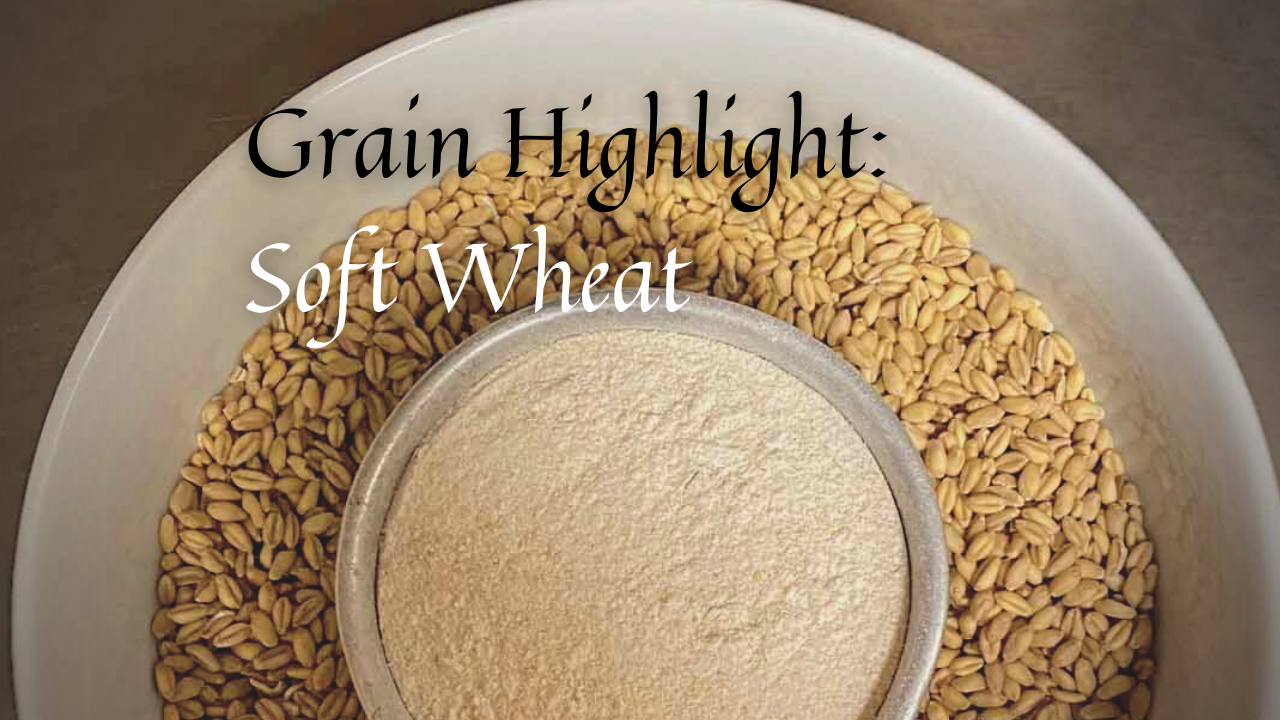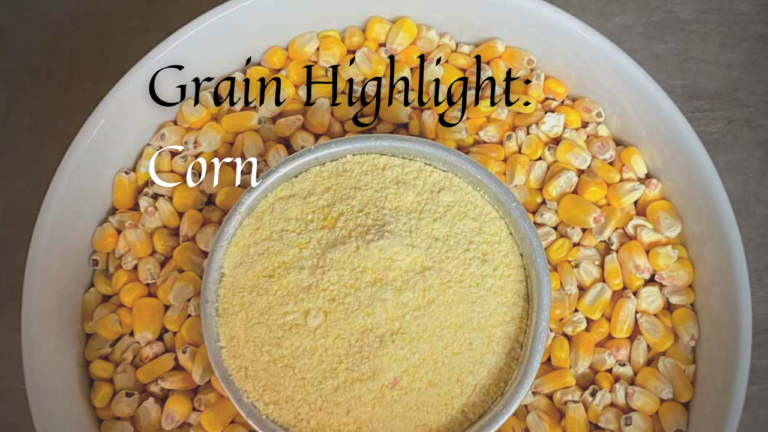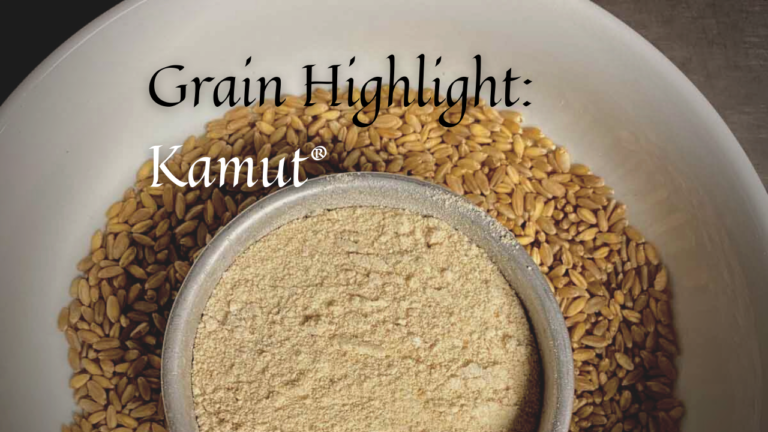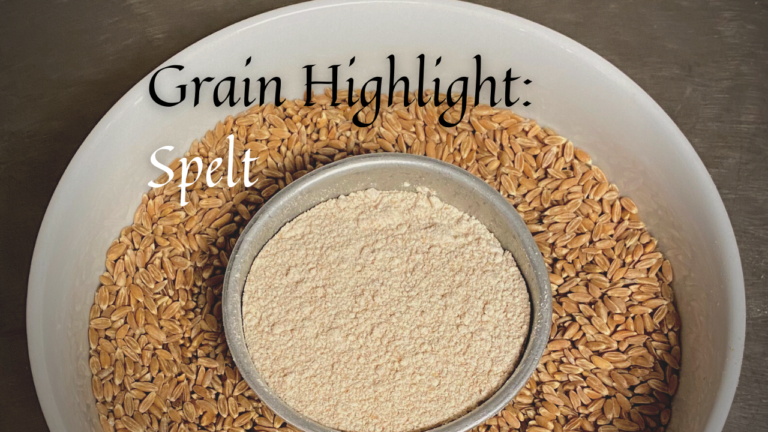This post may contain affiliate links. Read my full disclosure here.
As an Amazon Associate I earn from qualifying purchases.
If you are new to milling grains at home (or purchasing FRESHLY milled grains by someone local to you), I suggest you read my post: Homemade Flour from Whole Grains. It will answer many questions that may arise after reading this.
Soft Red and White Wheat
Soft Wheat comes in two varieties – Red and White. Soft Red Wheat has a more bold flavor while Soft White Wheat is much more mild. It’s obvious which is which, the White variety produces a white/lighter flour and Red makes a darker flour with an amber hue.
Soft Wheat is grown in warm, wet climates and therefore has a very soft outer layer. When I mill this wheat, my kids beg for a few pieces in their mouth so they can chew it like gum (you can’t do that with the harder wheats like Kamut or Hard White/Red Wheat).
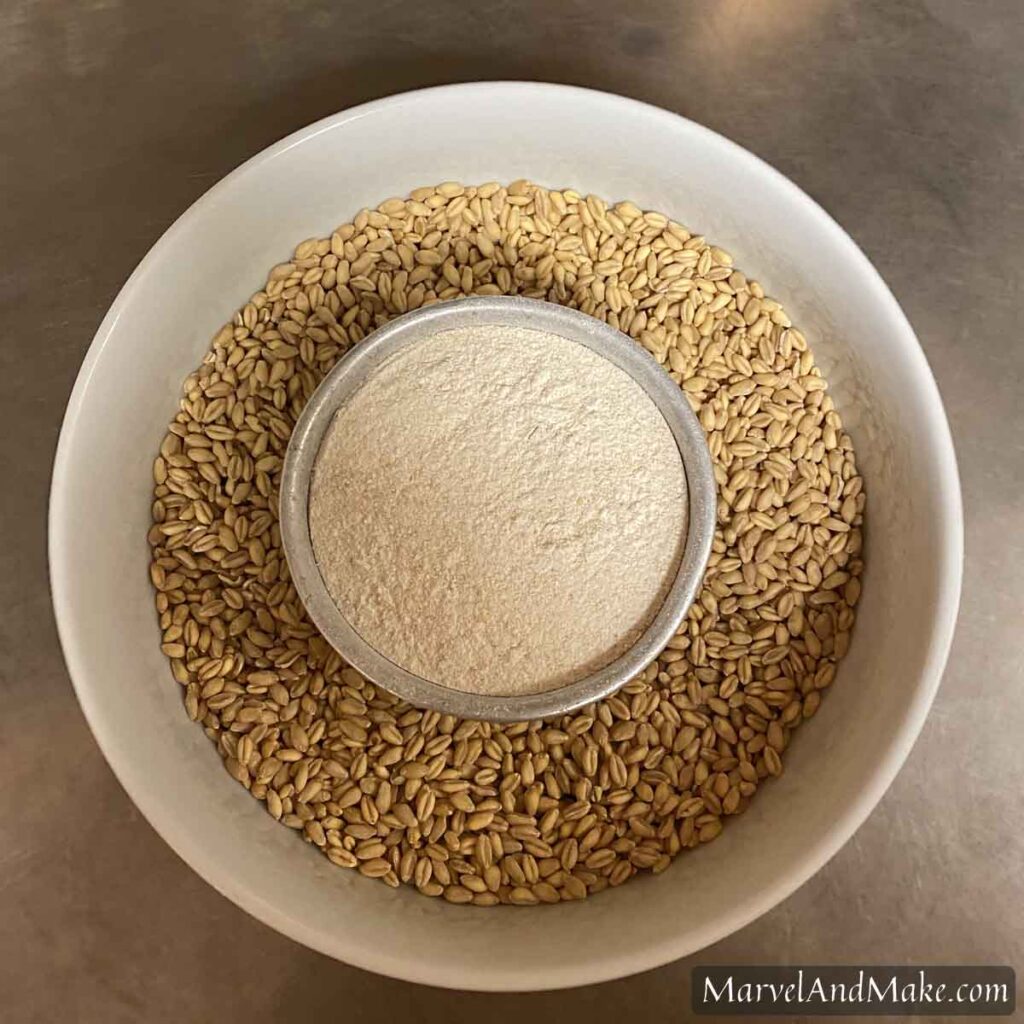
Soft Wheat is Best For…
If you are looking for a whole grain all-purpose flour replacement, this is the closest that I’ve found. All-purpose flour is made from a blend of the endosperm of soft and hard wheat (and is oftentimes bleached… yikes!). The endosperm is the starchy main portion of the wheat berry that also contains the majority of the protein but only some of the vitamins. The bran and germ of a wheat berry is where the concentrated vitamins, minerals, antioxidants, fiber, and healthy fats live. (This is one of the many reasons that it’s best to eat the whole grain and not flour that’s been processed with parts removed.)
Soft Wheat has a low protein content. This means that its structure won’t support a ton of gluten development (as seen in grains better for yeast breads). Soft Wheat flour is ideal for cookies, biscuits, pancakes, scones, cakes, pie crusts, pastries, etc. because the texture remains dense. (Gluten expands and rises so a low-gluten flour like Soft Wheat will not.)

